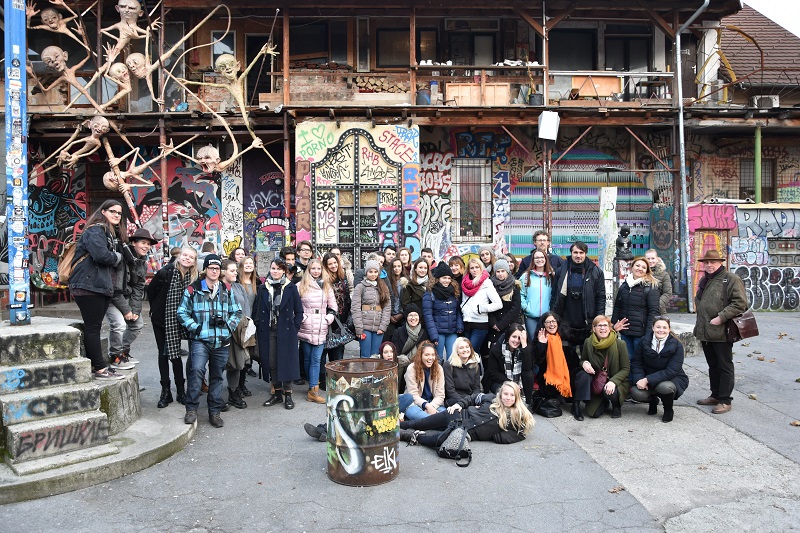Short-term students’ exchange to Slovenia
Ljubljana Secondary School of Design and Photography was proud to welcome students from five partner schools for the 5th short-term students’ exchange from November 14 – 18, 2016.
Slovenian mentors prepared five different workshops, namely pottery, wood cutting, hot wax painting, photography and ePortfolio making. The main idea was to teach students various artistic techniques, which have their roots in traditional Slovenian crafts, and then let students add their own modern touch to their artefacts.
The programme set off with a short presentation of the hosting school; its curriculum, activities, specifics. Then students divided into groups to work on their specific fields of interest – the five workshops.
Traditional Slovenia breakfast and wooden cutlery
The train of thought in this workshop was tradition – wood, traditional foods, traditional crafts. Students watched a video on how industrial designers create objects such as wooden cutlery. Then they learned about wooden knives and honey dippers Slovenians use at breakfast. Later they got engaged in sketching their own products and worked with the lathe to come up with beautiful objects.
Pottery
Slovenians love their pottery. Many of our most famous dishes, such as potica or prekmurska gibanica, are baked in clay trays. This is why we offered students to try themselves in clay modelling. Specialized mentors guided students through clay modelling on wheel, clay working with bare hands and decorating clay objects with their own designs.
Photography
All artists need some basic knowledge of photography. Since art has gone virtual and many artists are involved in graphic design, web design, film making and the like, photography serves as the basis for their visual expression. In this workshop students learned about camera obscura – the old technique of taking photos with the help of an empty dark object – something like a cookie yare. Students thus created self-portraits or selfies with the help of boxes. Moreover, they went crazy with creating out-of-the-box portraits in the dark room with natural objects such as leaves, branches, seeds, etc. For the majority of students this was the first time they entered a dark room and worked with chemicals.
Encaustic painting
Another workshop inspired by tradition. Slovenians are known for being bee lovers. We like to keep bees and produce honey. This is why one of the workshops was dedicated to hot wax painting, also known as encaustic painting. It is a very difficult and engaging technique, which started off with sketching, then applying the sketches to wooden boards and then working on them with hot wax. In the process, colour pigments were mixed with wax to get unique patterns and textures.
Virtual portfolios
No artist can succeed without a proper self-promotion. And self-promotion usually comes in virtual form. That is why we decided to instruct students on how to create their own portfolios, which can be used when accessing universities, approaching employers and presenting one’s work to general public. Students proved to be very motivated and managed to create not only portfolios, but also blogs and video promoting platforms.
Workshops were topped up with visits to the National Gallery, the Museum of Contemporary Art, the art district of Metelkova City, a visit to the studio of a well-known Slovenian painter Apolonia Simon, a trip to the village of Hrastovlje, known for its unique Church of the Holly Trinity, a trip to the picturesque town of Piran, a visit to Plečnik’s house and a tour around the capital city of Ljubljana.
On the final day, students used the knowledge acquired from the guide on How to put up an exhibition – a guide previously created in the project – and helped put up the exhibition of their work of art. As guests of honour, the host school invited Ambassadors of all partner schools, to which two Ambassadors replied. The Polish and Slovak Ambassadors thus attended the opening and gave speeches, praising our students in their efforts to become successful artists. Also present were the people from the Slovene national agency, CMEPIUS, in charge of the Erasmus+ projects, who congratulated us on our achievements.
All in all, it has been a very productive and intensive week in which students not only learned new artistic techniques, but also explored a new environment, got to know the art history of Slovenia, learned basic words from various languages, improved their English, made friends and compared their work of art with peers from six different European countries.
Ljubljana was proud to be the host to such a creative international crowd.


